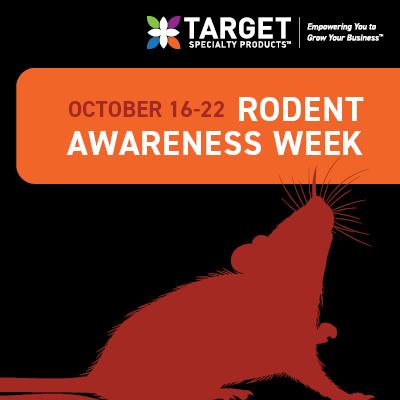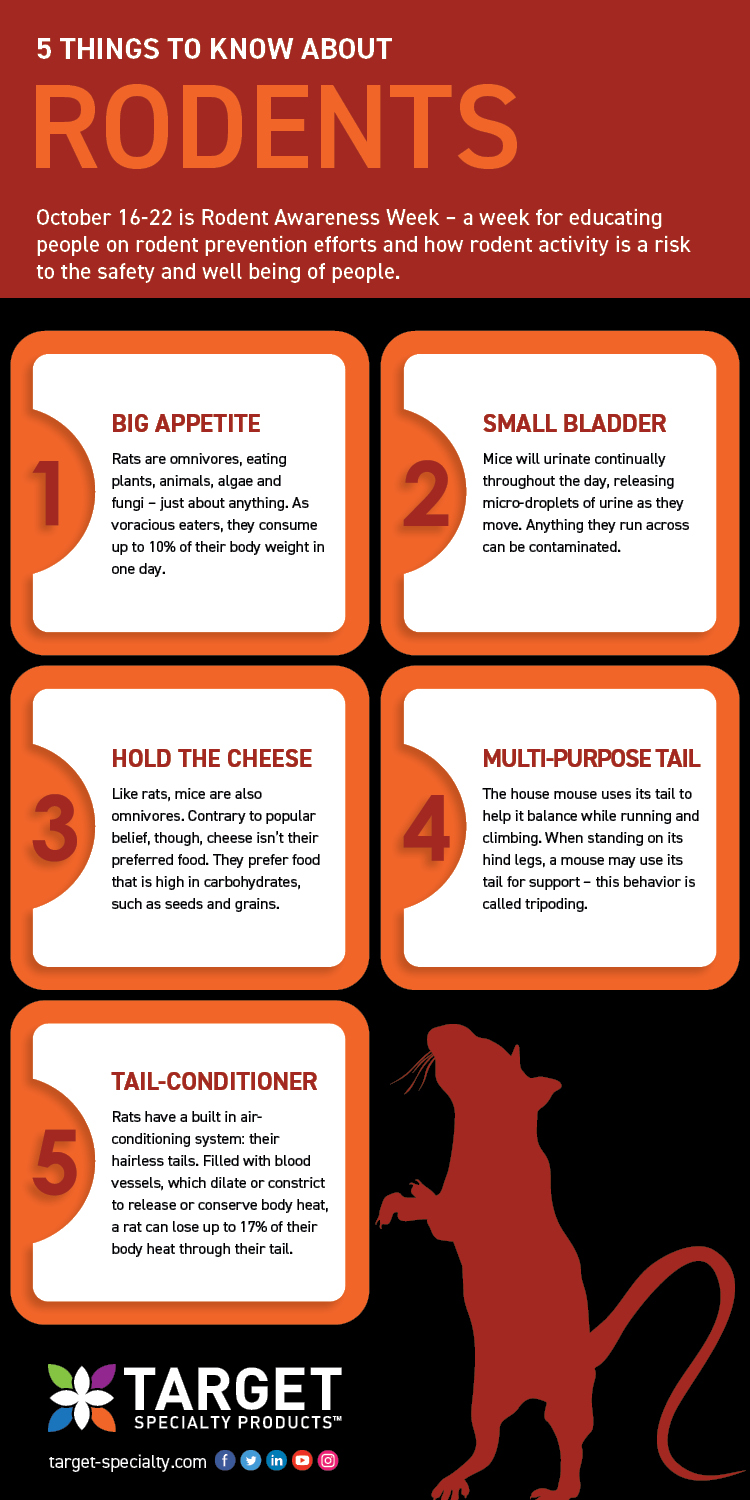
Rodent Awareness Week (October 16-22) is a reminder for pest control professionals across the U.S. to make their customers aware of the potential for increased rodent activity. It also provides an excellent opportunity for you to demonstrate your expertise and insight when it comes to addressing rodent control issues.
And, as an expert, you’re aware that what may be an effective solution for one rodent, may not work for another – an important consideration, as post-pandemic behaviors continue to change, creating ongoing challenges and the need for innovative solutions.
Why rodent populations are on the rise
There are three main contributing factors that act as a catalyst for mouse and rat activity: behavioral, environmental, and external. From urban cities to suburban neighborhoods – rodent populations are booming.
Understanding the reasons behind the rise is an important part of ensuring any integrated rodent management solution you’re offering is effective, long-lasting, and meets your customer’s expectations.
External factors
The pandemic at its height:
- Restaurant closures led to a decrease in available food, forcing some rodents to explore new areas in order to survive.
- Vacated spaces created new shelters, allowing rodents to nest and reproduce relatively undisturbed.
- People working, learning, and staying at home provided rodents the essential resources they were lacking. As people shifted from bustling cities to the safety of their homes, rats and mice followed.
Post-pandemic living:
- Restaurants and businesses reopen, offering outdoor dining options for people (and rodents.) There’s more food and trash on the streets than ever before. What used to be a back of the house issue, now is seen by customers in the front of the house.
- Labor shortages create a gap in maintenance. Areas with rodent activity go unnoticed, as regular cleaning protocols are scaled back.
- Rodents that fled the city now live in residential areas with less competition and more resources. They have established new burrows or nests, resulting in more settling populations than pre-pandemic.
- With the option to work from home, people have opted to move to other areas of the country, resulting in substantial population growth in some cities. As new home construction destroys rodent’s habitats, they seek shelter elsewhere oftentimes in the very structure that took over their territory.
Although the pandemic may have exacerbated rodent issues, environmental factors, such as warmer winters continue to aid in successful rodent reproduction and thriving populations.
Environmental factors
Warmer winters:
- Winter temperatures have been rising steadily in the United States. In 2019, the average winter (December - February) was 33.4°F, a degree above average, a trend that has continued over previous years.
- Cold winters create a natural population check, allowing for die-off and prohibiting reproduction. Without freezing winter temperatures, rodents are able to yield additional litters.
- People spend more time outside when the temperatures are warmer.
- Picnics, parties, camping, and outdoor dining account for more food waste, a major attractant for nearby rodents.
Day-to-day prevention efforts can make a big difference in keeping rodent populations in check. However, when those actions are not being done, it can result in the need for a professional pest control provider who understands the changing behaviors of rodents.
Behavioral factors:
What can you do when rats or mice don’t follow their natural expected behaviors? How can you ensure they’ll take the bait? Why do some accounts have continuous rodent problems? We have the answers to these questions and more.
What is an EAD rodent? According to Dr. Robert Corrigan, Urban Rodentologist, an EAD rodent is one that has developed Equipment Avoidance Disregard.
How does this affect you? Understanding EAD rodents can save you time, money, and make you look like a true rodent control expert.
All commensal rodents exhibit a certain level of being neophobic (the fear of new things). However, when it comes to EAD rodents, they avoid new things because that’s what they have learned to do. For instance, if you have dealt with a repeat rodent infestation that has gone on for years, you could be dealing with generations of EAD rodents. These rodents were taught to avoid traps, baits, and other devices.
Improve your success rate with EAD rodents with these helpful tips.
3 things you should know about catching EAD rodents and other helpful advice
- Older homes and buildings with consistent bouts of rodent activity can often be the most challenging. Whether you're dealing with mice or rats, the rodents you’re trying to exterminate have likely lived in the structure or connecting sewers for generations and know the routine. They have the place mapped out and are on high alert the minute something has been removed or added to their dwelling.
- Avoid placing traps around room perimeters. Instead, look for areas with sebum markings, urine pillars, and shadows – these are high activity areas. The more urine markings in the area, the stronger their hold is on that spot. By placing trust traps near a sebum trail, rodents will become familiar with it and
- Not all EAD rodents have been taught by the same matriarch. Diversifying your offerings by adding a kill trap to the center of trust traps and trying out different bait types, sizes, and textures can prove to be an effective strategy. Once you’ve captured the natural foraging and traveling behavior of your intended target, you will see much better results.
Roof rats are known to be one of the most difficult rodents to control due to their secretive behavior and their ability to scale tall structures and trees. With a tail longer than its body from nose to rump, the roof rat is fairly distinguishable from its distant cousin, the Norway rat which sports a shorter tail designed for burrowing. When dealing with roof rats, check dark shadowed areas and remember to look up.
The Soy Myth: Mice are attracted to cars that have wires coated with soy-based insulation. Not exactly true. Mice have been gnawing on car wiring long before soy-based insulation came into existence. Soy or non-soy, they have a natural instinct that makes them want to chew on things.

Rodent control solutions
The result of rodent activity extends beyond structural damage or the threat of disease. Living with rodents can cause lasting emotional damage such as fear, anger, stress, anxiety, and loss of sleep. Creating peace of mind for your customer should be your main focus.
One of the most effective ways to prevent rodents from entering a building is exclusion. However, for some older, larger structures this can be especially problematic especially when cracks, gaps, and holes are a continual issue. That’s when an integrated management approach comes into play, focusing on your customer’s immediate rodent control needs and future preventive efforts.
Target Specialty Products provides over 80 years of industry experience and insight for controlling pest populations. If you need help selecting the most effective products to use for eliminating and preventing rodents or other pests, please contact us here. We also have 44 active locations across the country with representatives ready to provide their support.

